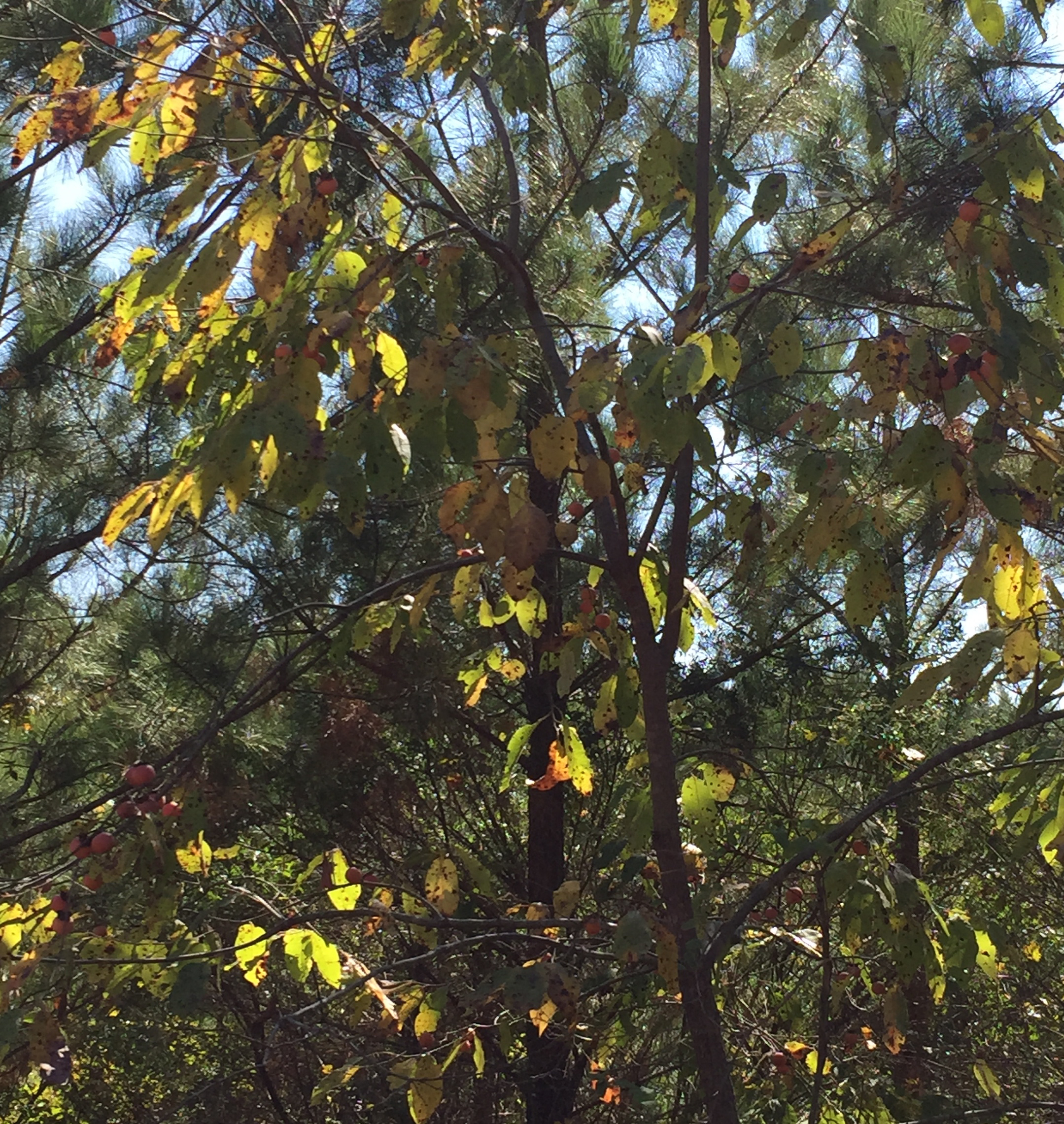"If it be not ripe, it will draw a man’s mouth awry, with much torment, but when it is ripe, it is as delicious as an apricot." Captain John Smith
Persimmon (Diospyros virginiana)
The persimmon tree is about fifteen to thirty feet in height. Persimmon trees are found growing throughout the southeast, usually in open woods or near fields. The persimmon fruit is bright orange and about 1/2 inch in diameter. Persimmons are very sweet but should only be gathered when they are completely ripe. If gathered before hand you will be sorry. Unripe persimmons are very astringent when green and hard. They remain astringent until ripening is complete. When ripe them become soft and mushy and will usually fall to the ground. Persimmon pulp is great in pies, breads, and cakes. Persimmons also make delicious jelly and jam which tastes a little like peach jelly or jam. Persimmon leaves are rich in vitamin C and can be dried and used to make a very tasty tea. The tastiest way I have found to use the persimmon is to use the persimmon pulp in recipes calling for bananna pulp. The two are similar in consistency and can be used in the same recipes. By far the most outstanding food produced from persimmon is persimmon-nut bread. (see recipe below)
The images below are of a persimmon tree recently encountered. The fruit is not quite ripe, still a little mouth puckering to the taste, but should ripen soon. (10/28/2014)
Persimmon Nut Bread
1 cup sugar
1 1/2 sticks of margarine or butter
2 eggs
2 cups flour
1 teaspoon baking powder
1 teaspoon cinnamon
1/2 teaspoon ground ginger
1/2 teaspoon salt
1 cup persimmon pulp
1 teaspoon vanilla
1/2 cup nuts
Cream together margarine, sugar and egg. Sift together flour, baking powder, cinnamon, ginger, and salt. Blend dry ingredients into first mixture. Add to it the persimmon pulp, vanilla, and nuts. Mix well. Pour Into a greased loaf pan and bake at 350 degrees for 45-50 minutes.


